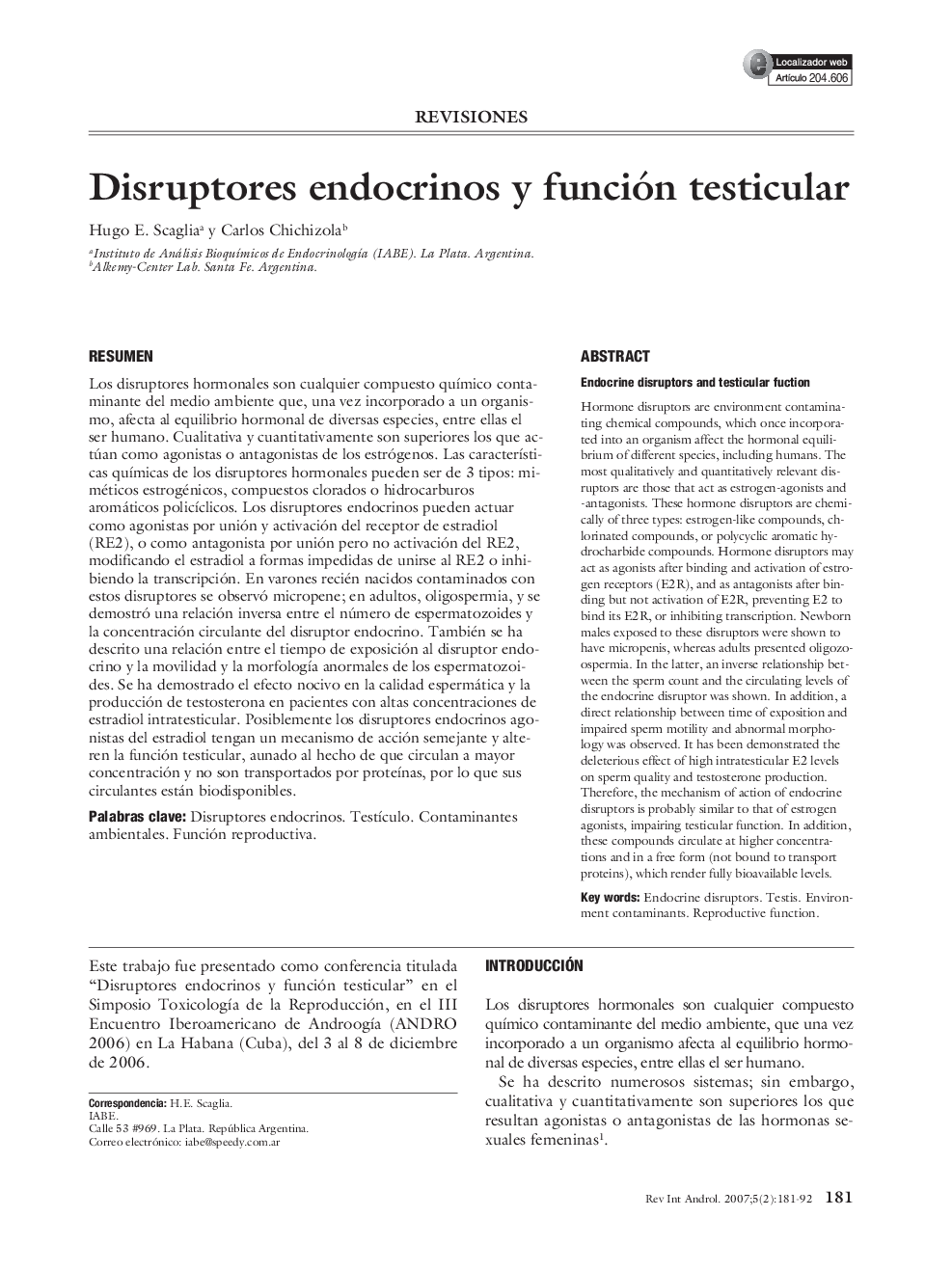| Article ID | Journal | Published Year | Pages | File Type |
|---|---|---|---|---|
| 916231 | Revista Internacional de Andrología | 2007 | 12 Pages |
Abstract
Hormone disruptors are environment contaminating chemical compounds, which once incorporated into an organism affect the hormonal equilibrium of different species, including humans. The most qualitatively and quantitatively relevant disruptors are those that act as estrogen-agonists and -antagonists. These hormone disruptors are chemically of three types: estrogen-like compounds, chlorinated compounds, or polycyclic aromatic hydrocharbide compounds. Hormone disruptors may act as agonists after binding and activation of estrogen receptors (E2R), and as antagonists after binding but not activation of E2R, preventing E2 to bind its E2R, or inhibiting transcription. Newborn males exposed to these disruptors were shown to have micropenis, whereas adults presented oligozoospermia. In the latter, an inverse relationship between the sperm count and the circulating levels of the endocrine disruptor was shown. In addition, a direct relationship between time of exposition and mpaired sperm motility and abnormal morphology was observed. It has been demonstrated the deleterious effect of high intratesticular E2 levels on sperm quality and testosterone production. Therefore, the mechanism of action of endocrine disruptors is probably similar to that of estrogen agonists, impairing testicular function. In addition, these compounds circulate at higher concentrations and in a free form (not bound to transport proteins), which render fully bioavailable levels.
Related Topics
Health Sciences
Medicine and Dentistry
Surgery
Authors
Hugo E. Scaglia, Carlos Chichizola,
